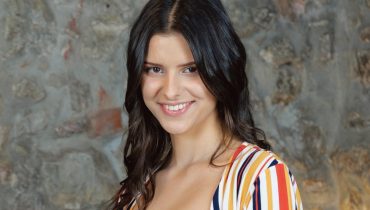For most of her twenties, Ella Brooks didn’t think much about vitamins. “I ate healthy, worked out, and thought supplements were for older people,” she laughs. But after breaking her wrist during a simple fall on a hiking trip, her doctor’s words stunned her: low bone density. “I was shocked,” she says. “I wasn’t even thirty, but my body was already asking for help.” What started as an injury became a journey of discovery — one that taught Ella the vital importance of vitamin D for bone strength and overall well-being.
When Strength Isn’t Visible
Like many young professionals, Ella lived a busy indoor life. “I worked long hours in an office and barely saw sunlight,” she recalls. Her diet, while balanced, didn’t include many fortified foods or oily fish. “I didn’t realize that vitamin D doesn’t come from salads,” she laughs. A blood test revealed her levels were severely low. Her doctor explained that vitamin D acts as a gatekeeper — helping the body absorb calcium and phosphorus, the building blocks of strong bones. “Without it,” he said, “you can drink all the milk in the world, and it won’t matter.”
That realization led Ella to research the role of vitamin D far beyond bone health. “I learned it’s connected to immunity, mood, and even energy,” she says. “It’s not just a vitamin — it’s a hormone your body depends on.” According to the National Institutes of Health (NIH), nearly 40% of U.S. adults are deficient, especially those who work indoors, live in northern states, or have darker skin tones. “I was basically the perfect candidate for deficiency,” Ella admits. “But I didn’t know the symptoms until it was too late.”
The Warning Signs You Shouldn’t Ignore
Looking back, Ella realized her body had been signaling trouble for months. “I was tired all the time, and my muscles felt weak after workouts,” she recalls. She often experienced back pain and mood swings that she blamed on stress. “It wasn’t depression — it was depletion,” she says. “Once I started correcting my vitamin D levels, everything changed.”
Her doctor recommended a daily supplement of 2,000 IU of vitamin D3, the more bioavailable form compared to D2. Within a few weeks, she noticed improvement in her mood and energy. “I didn’t just feel stronger physically — I felt lighter mentally,” she says. The science supports her experience: multiple studies show that vitamin D deficiency can contribute to fatigue, muscle weakness, and even seasonal affective disorder (SAD).
How Ella Built Her Vitamin D Routine
After her injury healed, Ella made bone health a priority. She built a routine that combined diet, lifestyle, and supplements — the three pillars of lasting strength. “I didn’t want to rely on pills forever,” she says. “So I looked for natural ways to boost my levels.”
- 1. Sunshine therapy: Ella spends 20 minutes outdoors each morning. “Sunlight on skin triggers vitamin D production,” she explains. “It’s simple, free, and grounding.”
- 2. Smart nutrition: She added salmon, sardines, eggs, and fortified almond milk to her diet. “Food became my first line of defense,” she says.
- 3. Consistent supplements: Ella takes vitamin D3 with magnesium and K2, which help absorption and direct calcium into bones instead of arteries. “The trio works like a team,” she notes.
Her efforts paid off. Six months later, a follow-up scan showed improved bone density. “It was proof that small daily actions matter,” she says. Today, Ella encourages friends and followers to test their vitamin levels before problems arise. “Deficiency is silent until it screams,” she warns. “Prevention is the real strength.”
Why Women Need to Pay Extra Attention
Bone loss accelerates in women due to hormonal changes. “My mom’s generation learned that too late,” Ella says. She points to data from the National Osteoporosis Foundation showing that one in two women over 50 will break a bone due to osteoporosis. “That risk starts earlier than we think,” she says. Maintaining optimal vitamin D levels during early adulthood lays the foundation for lifelong resilience.
For Ella, education became empowerment. She now shares her story on health podcasts and wellness blogs, encouraging young women to view vitamins not as trends but as tools. “Your bones are your body’s foundation,” she says. “Take care of them now, and they’ll carry you far.”
Ella’s Guidance for Building Stronger Bones
Her advice is straightforward and science-backed:
- Get tested: “A simple blood test can show your vitamin D levels. Don’t guess — measure.”
- Pair D3 with K2 and calcium: “They work in synergy to fortify your bones and prevent arterial calcification.”
- Move your body: “Weight-bearing exercise like walking, yoga, or resistance training stimulates bone growth.”
- Stay consistent: “You won’t feel results overnight, but your body will thank you years later.”
As she looks back, Ella reflects on her journey with gratitude. “Breaking my wrist was a wake-up call,” she says. “It forced me to rebuild from the inside out.” Her story is a reminder that strength isn’t about muscles or appearance — it’s about structure, both physical and emotional. “When you give your body what it truly needs,” she smiles, “it gives you back the freedom to live fully.”





























































